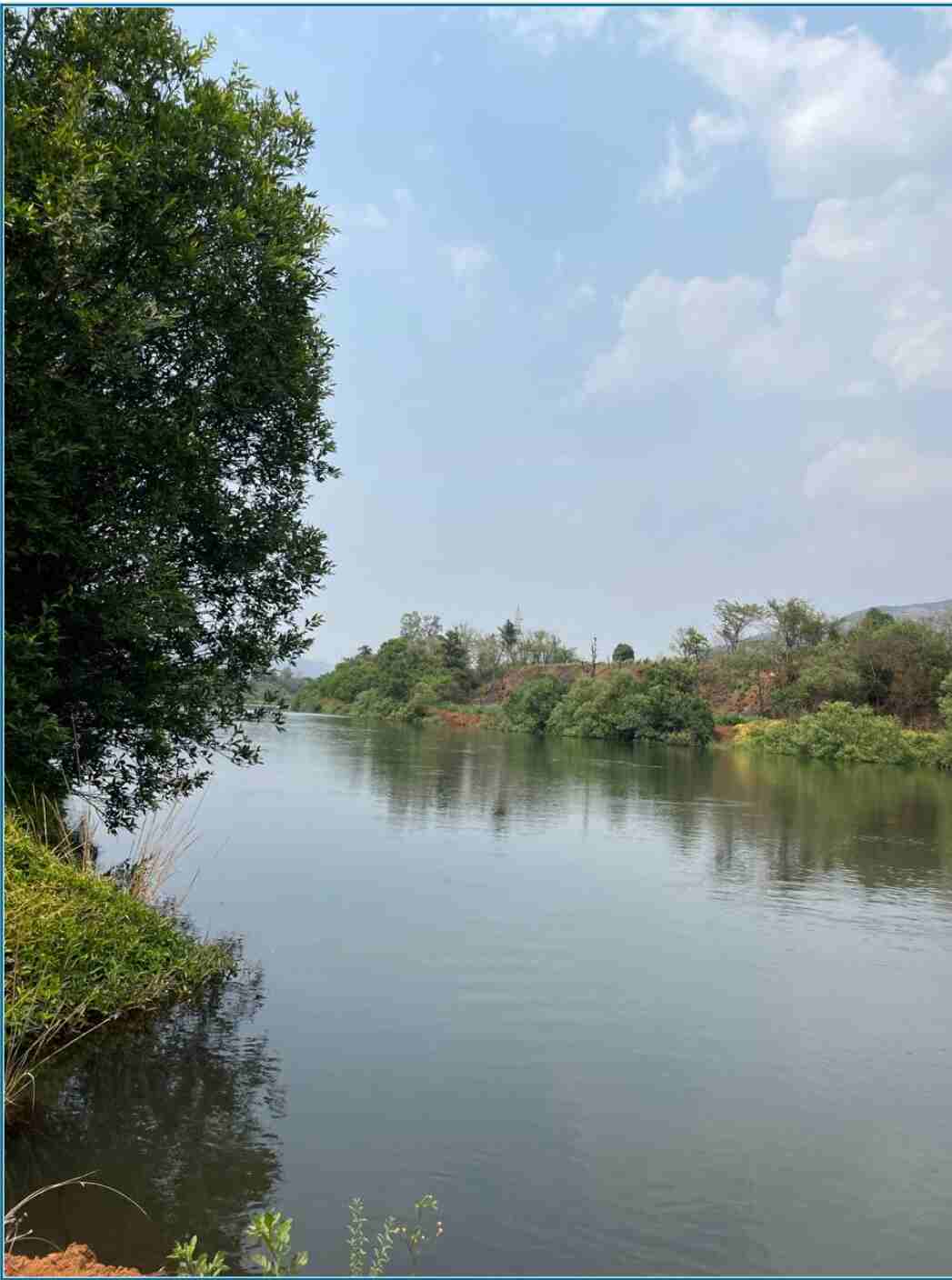Student Researchers Explore How Nature Tourism Empowers Communities and Protects Wildlife
On 31st March 2024, we, the students of Environmental Studies at FLAME University got the chance to visit Koyna to see the Wildlife Research and Conservation Society’s (WRCS) current conservation work and get a sense of the impact it has on the lives and perspectives of the locals. Our field trip was guided by Mr. Sunil Kale, Project Manager of WRCS. He took us to a plantation site located in the wildlife corridor of two protected areas – Chandoli National Park and Koyna Wildlife Sanctuary in Maharashtra – where we saw the saplings of the native species they planted and further discussed their work. We then had lunch at Diamond Resort, a local-run private homestay that has been involved with the NGO since 2013-2014.
The private forest land (on which Diamond Resort is built on) belonging to Mr. Jagannath Sapkal was converted into one of the first locally led ecotourism destinations in the region. The resort was located by the Koyna River and consists of two buildings – the two-story homestay and an open hall area with a kitchen, and washrooms. The food was freshly prepared and consisted of parathas, dal, chole, murda (a local vegetable), mango pickle, rice, and papad. In our conversation with Mr. Sapkal and his son, who were the pioneers of local-based ecotourism in Koyna, we learned that 80 to 90% of this food was sourced from the different trees, and plants within their resort as well as their own farms. Apart from their ecotourism business, Mr. Sapkal also sells various food products like fragrant Indrayani rice and homemade pickles. Mr. Sapkal further stated, with the recommendations from WRCS, he planted lemon, jackfruit, mango, and other trees, encouraging their business growth with the use of organic farming. We were also fortunate to witness the full beauty of these flourishing trees.
Initially, their business was slow. Relying primarily on word-of-mouth, the aesthetic and calming effect of the lush greenery eventually started boosting their business. Eventually, Mr. Sapkal expanded his property to accommodate more visitors. Now, they have around 2000 customers coming every year, mainly from within Maharashtra but some also come from other states. With this business growth, they have employed six local people. The ecosystem created as a result of Mr. Sapkal and WRCS’s combined efforts has benefited not only the local flora and fauna but also provided employment opportunities to those living in the region.
The issue of employment has been a pressing one in the region, with the youth migrating to cities like Mumbai and Pune in hopes of better job prospects and earnings. Land generates little revenue on its own and is usually sold off to private players who develop tourist resorts in the area. WRCS identified a different route to encourage and incentivize conservation efforts in the region. Instead of simply coming up with reasons to persuade the locals to allow reforestation and conservation efforts in the region, they identified solutions to the problems the locals would face and tried persuading them to implement the same. This took care of not only the people’s problems but also provided an incentive to take an active part in conservation efforts. Promoting ecotourism was a brainchild of this effort. Ecotourism is a form of market-based tourism which promotes responsible tourist activities and places particular emphasis on the wellbeing of locals.
Ecotourism proved to be an extremely successful venture for the Sapkal household. Mr. Sapkal’s son–Vinayak Sapkal–now ends up earning 3-5 times more than how much he would earn in the city. They are optimistic about the mitigating effect that ecotourism provides when it comes to the region’s youth migration. When asked about the potential competition that future (and possibly bigger) ecotourism ventures could bring, Mr. Sapkal cheerfully responds by saying that he would be delighted to see more ecotourism ventures being established in the region. He does not look at that prospect as competition, but rather as a chance for people to solve their economic problems while also conserving the beautiful nature that surrounds them. Having experienced the two-fold benefits of ecotourism, Mr. Sapkal introduced his friends and family into the line as well.
This case is a good example of ecotourism done well by following some standards that reduce the negative consequences of neoliberal conservation. First and foremost, effective community involvement and leadership are essential to ecotourism initiatives. To ensure that benefits are distributed fairly, it is imperative to recognize the importance of the local community’s role in how ecotourism is created and managed in their region. Second, it’s important to use sustainable practices that put long-term ecological health above quick cash. Some examples involve making investments in eco-friendly practices like organic farming.
In conclusion, the ecotourism case in Koyna represents the power of community-led conservation efforts. Through initiatives like locally led ecotourism, started by individuals like Mr. Sapkal and supported by NGOs like WRCS, communities can not only conserve their natural environment but also generate sustainable livelihoods. By giving priority to community involvement and sustainable practices, this model of ecotourism helps regions struggling with environmental conservation and economic development.
AUTHORS
Adit Shah, Asawari Bhagwat, Chitra Nair and Kavya Joshi
(Students of Environmental Studies program at FLAME University)
The views expressed here are personal and do not necessarily represent those of the organisation or the publication


